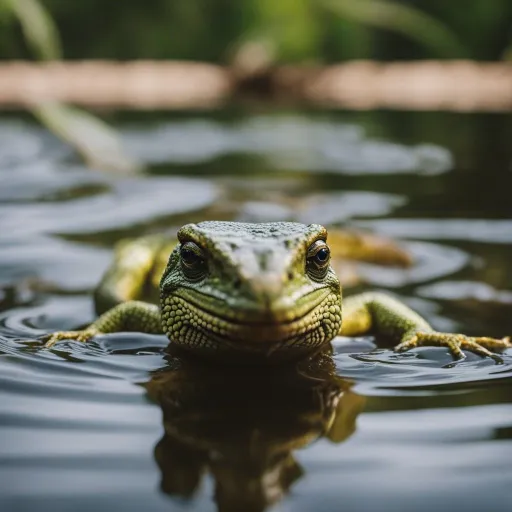
So, you’ve probably noticed that lizards have a knack for shedding their skin, leaving behind a trail of sloughed-off scales in their wake.
But have you ever wondered why they do it? Well, wonder no more! In this article, we’re going to uncover the fascinating reasons behind why lizards shed their skin.
From growth spurts to maintaining optimal health, there’s more to this seemingly mundane reptilian habit than meets the eye.
So, sit back, relax, and prepare to be amazed as we unravel the mysteries of lizard shedding.
Why Do Lizards Shed
Lizards are fascinating creatures that have the ability to shed their skin periodically. While this may seem strange to us humans, shedding is actually a natural and necessary process for them.
In order to understand why lizards shed, it is important to delve into the complex world of their skin structure, the process of shedding, the frequency and patterns of shedding, and the various factors that trigger this fascinating phenomenon.
Shedding not only benefits lizards by aiding in their growth and development, but it also helps them regulate their body temperature, remove parasites and bacteria, and renew their scales and colors. Let’s explore each of these aspects in detail.
Understanding the Skin Structure of Lizards
Before we dive into shedding, it is crucial to comprehend the skin structure of lizards. Unlike humans who have a single layer of skin, lizards have two layers: an outer layer called epidermis and an inner layer called dermis. The epidermis is made up of several layers of cells, while the dermis houses blood vessels, nerves, and other important structures. This unique skin structure not only protects the lizards from external threats but also allows them to perform various functions essential for their survival.
The Process of Shedding
Shedding, also known as molting, is the process where lizards shed their old skin and replace it with a new one. This is crucial for their growth and development. Shedding starts when the epidermis begins to separate from the dermis, creating a layer of fluid between the two layers. This fluid helps in loosening the old skin, making it easier for the lizard to shed. The old skin then gradually peels off, revealing the fresh and vibrant new skin underneath. This process is not only necessary for the lizards’ overall well-being but also serves several important purposes.https://www.youtube.com/embed/4iBuHDyN7gQ
Frequency and Patterns of Shedding
The frequency and patterns of shedding can vary among different species of lizards. Generally, lizards shed their skin every few weeks to several months, depending on factors such as age, growth rate, and environmental conditions. Younger lizards tend to shed more frequently compared to older ones as they are still in their growth phase. Some lizards shed their skin in small patches, while others shed it all at once. The shedding process can take anywhere from a few hours to several days, depending on the size and species of the lizard.
Factors that Trigger Shedding
Several factors play a role in triggering the shedding process in lizards. One of the primary triggers is growth. As lizards grow, their old skin becomes too tight for their enlarging bodies, prompting them to shed it and make room for new growth. Environmental factors also play a vital role. Changes in temperature, humidity, and light can influence the shedding patterns of lizards. Additionally, the availability of food and water, as well as hormonal changes, can also impact the shedding process. It is important to note that shedding is a natural and necessary process for the well-being of lizards and should not be interfered with, unless necessary for medical reasons.

Regrowth and Replacement of Skin
Once the old skin is shed, the process of regrowth and replacement begins. The new skin that emerges is not only fresh and vibrant but also helps protect the lizard from external threats. The new skin is initially soft and delicate but gradually hardens over time. During this regrowth phase, lizards may appear slightly dull or discolored, but their vibrant colors eventually return once the skin has fully matured. This regrowth and replacement of skin is a continuous process throughout a lizard’s life, ensuring their well-being and survival in their natural habitats.
Benefits of Shedding for Lizards
Shedding offers several benefits for the overall health and well-being of lizards. Let’s explore some of these benefits in detail.
Regulating Body Temperature
One of the significant benefits of shedding for lizards is the regulation of body temperature. The old skin often accumulates dirt, debris, and parasites, making it less effective in heat exchange and temperature regulation. By shedding their old skin, lizards can remove these unwanted substances and allow their new skin to efficiently regulate their body temperature. This helps them adapt to changes in the environment and maintain their optimal body temperature for essential physiological functions.
Removing Parasites and Bacteria
Another crucial benefit of shedding is the removal of parasites and bacteria. The old skin can harbor various parasites such as mites and ticks, as well as bacteria that can cause infections. By shedding their old skin, lizards can effectively get rid of these harmful organisms, reducing the risk of diseases and maintaining their overall health. This natural defense mechanism ensures that lizards stay healthy and free from potentially harmful infestations.
Growth and Development
Shedding plays a pivotal role in the growth and development of lizards, particularly the younger ones. As their bodies grow, they need more space and flexibility, which is achieved by shedding the old skin. The shedding process allows them to shed the constricting layers and replace them with larger and more accommodating ones. This constant growth and shedding cycle ensures that the lizards can develop properly and adapt to the changes in their bodies as they mature.
Renewing Scales and Colors
Lastly, shedding helps lizards renew their scales and colors. Over time, the scales on their skin can become worn out, damaged, or discolored. Shedding allows the lizards to replace these old scales with fresh ones, restoring their vibrant colors and enhancing their appearance. This renewal of scales and colors not only aids in their camouflage and protection but also contributes to their overall beauty and survival in their natural habitats.
Final Thoughts
In conclusion, shedding is an essential process for the health and survival of lizards. It allows them to grow, develop, regulate their body temperature, remove parasites and bacteria, and renew their scales and colors.
Understanding the intricacies of shedding in lizards provides us with insights into their fascinating biology and highlights the importance of maintaining a suitable environment for these remarkable creatures to thrive.



